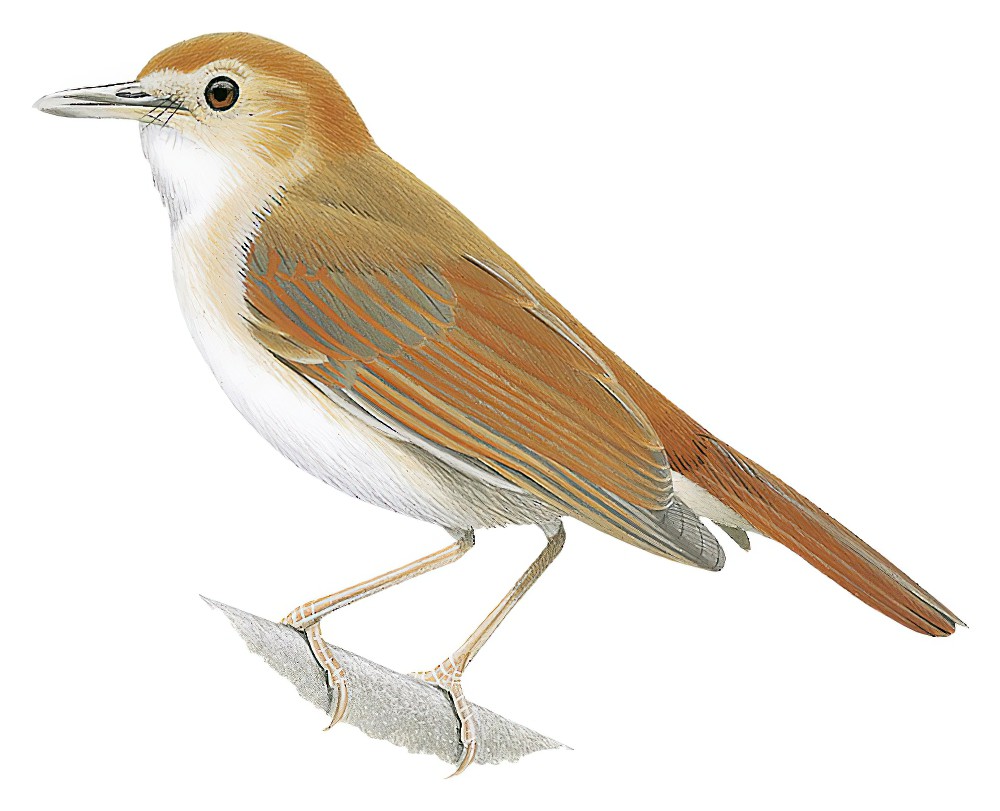Ferruginous Babbler / Pellorneum bicolor

Ferruginous Babbler
SCI Name:
Protonym: Brachypteryx bicolor Rev.Zool. 2 p.138
Taxonomy: Passeriformes / Pellorneidae / Pellorneum
Taxonomy Code: ferbab1
Type Locality: Sumatra.
Author: Lesson
Publish Year: 1839
IUCN Status: Least Concern
DEFINITIONS
PELLORNEUM
(Pellorneidae; Ϯ Puff-throated Babbler P. ruficeps) Gr. πελλος pellos dark-coloured, dusky; ορνεον orneon bird < ορνις ornis, ορνιθος ornithos bird; "Genus, PELLORNEUM*. ... Bill moderate, straight, somewhat conic; the tip notched. Gonys ascending. Frontal feathers small, rigid, directed forward. Rictus bristled. Wings very short, much rounded. Tail moderate, graduated. Tarsus and middle toe of equal length; lateral toes much shorter, equal. Anterior claws very small, and but slightly curved. Hinder toe shorter than the middle. Anterior scales scarcely divided. Type.—Pellorneum ruficeps, above brown, beneath fulvous white, striped with brown; chin white immaculate; front and crown rufous. Inhabits India. MUS. NOST. OBS.—This genus represents, or rather passes into Phyllastrephus; thus connecting the Crateropodinæ and the Brachypodinæ. From the former it is distinguished by its more slender thrush-like feet, its small slightly curved claws, &c. The general appearance of the only species I have yet seen, and which is from India, is that of a small thrush, but resembling a Timalia. ... *Th. πελλος fuscus, et ορνεον avis." (Swainson 1831).
Var. Pelorneum, Pellornium.
Synon. Bessethera, Cinclidia, Drymocataphus, Scotocichla.
bicolor
L. bicolor, bicoloris bicoloured < bi- two- < bis twice; color, coloris colour; epithet usually given to spp. with white underparts and contrastingly darker upperparts.
● ex “Crested Titmouse” of Catesby 1731, and “Mésange hupée de la Caroline” of Brisson 1760 (Baeolophus).
● ex “Coucal Noirou” of Levaillant 1807, pl. 220 (syn. Centropus nigrorufus).
● ex “Colibri Nr. 2” of Fermin 1769, “Saphir-émeraude” of de Buffon 1770-1783, and “Sapphire-and-Emerald Humming-bird” of Latham 1782 (Cyanophaia).
● ex “Pic varié de la Encénade” of d’Aubenton 1765-1781, pl. 748, fig.1, and “Encenada Woodpecker” of Latham 1782 (syn. Dendrocopos lignarius).
● ex “Pato roxo y negro” of de Azara 1802-1805, no. 436 (Dendrocygna).
● ex “Ramier blanc mangeur de muscade de la Nouvelle Guinée” of Sonnerat 1776 (Ducula).
● ex “Gobe-mouche à ventre blanc de Cayenne” of d’Aubenton 1765-1781, pl. 566, fig. 3, and de Buffon 1770-1786, and “Black and white Fly-catcher” of Edwards 1758, and Latham 1783 (syn. Fluvicola pica).
● ex "Merle brun du Cap de Bonne Espérance" of de Buffon 1770-1783, and "White-rumped Thrush" of Latham 1783 (Lamprotornis).
● ex "Bahama Sparrow" of Catesby 1731 (Melanospiza).
● ex “Petit Guêpier du Sénégal” of d’Aubenton 1765-1781, pl. 318 (?syn. Merops hirundineus).
● ex “Guêpier de l’isle de France” of d’Aubenton 1765-1781, pl. 252 (syn. Merops viridis).
● ex “Schet Noir” of Levaillant 1805, pl. 148 (syn. Terpsiphone mutata).
UPPERCASE: current genus
Uppercase first letter: generic synonym
● and ● See: generic homonyms
lowercase: species and subspecies
●: early names, variants, mispellings
‡: extinct
†: type species
Gr.: ancient Greek
L.: Latin
<: derived from
syn: synonym of
/: separates historical and modern geographic names
ex: based on
TL: type locality
OD: original diagnosis (genus) or original description (species)












